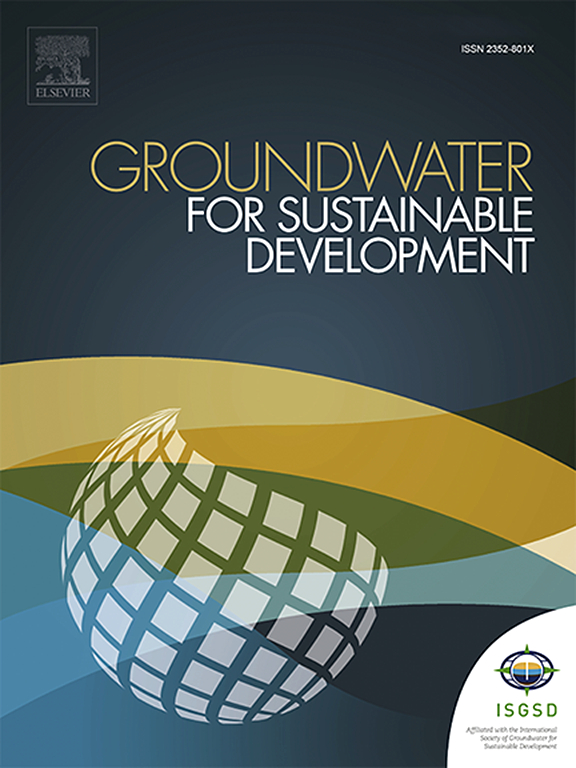A comprehensive review on bioremediation and biomonitoring of microplastics: Circular bioeconomy and future perspective
IF 4.9
Q2 ENGINEERING, ENVIRONMENTAL
引用次数: 0
Abstract
The rapid growth in urbanization and industrialization has led to widespread utilisation of plastics, aiding in the formation of micro- and nanoplastics (MPs/NPs). These particles persist through atmospheric, terrestrial, and aquatic ecosystems. The pervasive nature of these particles results in a serious threat to human health and the environment due to their ability to get readily absorbed into the skin, gastrointestinal system, and respiratory tract, and start accumulating in the tissues, followed by interfering with cellular functions. The current review explores the bioremediation and biomonitoring strategies for the mitigation of microplastics. Depicting from an interdisciplinary field that combines microbial ecology, environmental biotechnology and principles of circular bioeconomy, the review describes three major bioremediation strategies, such as enzymatic degradation for particular MPs, microbial degradation for diverse MP types, and phytoremediation for high-scale removal. The current review synthesizes recent studies highlighting the limitations, effectiveness, and scalability of these methods. This study also evaluates the advanced biomonitoring tools, such as biosensors, imaging and spectroscopic studies, for tracking of microplastic distribution. The key findings reveal that bioremediation is found to be a suitable alternative, with microbial consortia and engineered enzymes demonstrating promising degradation efficiency. Integrating biomonitoring with bioremediation strategies enhances the efficiency and safety of MP removal. This study underscores the significance of developing integrated, ecosystem-specific solutions by combining remediation technologies with preventive policies. The future research should focus on standardization of optimization and monitoring protocols in bioremediation for real-world applications.

微塑料的生物修复与生物监测综述:循环生物经济与未来展望
城市化和工业化的快速发展导致了塑料的广泛使用,有助于形成微塑料和纳米塑料(MPs/NPs)。这些颗粒在大气、陆地和水生生态系统中持续存在。这些颗粒的普遍性对人类健康和环境造成了严重威胁,因为它们很容易被皮肤、胃肠道系统和呼吸道吸收,并开始在组织中积累,随后干扰细胞功能。本综述探讨了减轻微塑料的生物修复和生物监测策略。该综述从微生物生态学、环境生物技术和循环生物经济原理相结合的跨学科领域描述了三种主要的生物修复策略,如酶降解特定的多聚物,微生物降解不同类型的多聚物,以及大规模去除的植物修复。当前的综述综合了最近的研究,突出了这些方法的局限性、有效性和可扩展性。本研究还评估了先进的生物监测工具,如生物传感器、成像和光谱研究,用于跟踪微塑料的分布。关键发现表明,生物修复被认为是一种合适的替代方法,微生物联合体和工程酶显示出有希望的降解效率。将生物监测与生物修复策略相结合可提高MP去除的效率和安全性。这项研究强调了通过将修复技术与预防政策相结合,开发综合的、针对生态系统的解决方案的重要性。未来的研究重点应放在标准化的优化和监测方案的生物修复实际应用。
本文章由计算机程序翻译,如有差异,请以英文原文为准。
求助全文
约1分钟内获得全文
求助全文
来源期刊

Groundwater for Sustainable Development
Social Sciences-Geography, Planning and Development
CiteScore
11.50
自引率
10.20%
发文量
152
期刊介绍:
Groundwater for Sustainable Development is directed to different stakeholders and professionals, including government and non-governmental organizations, international funding agencies, universities, public water institutions, public health and other public/private sector professionals, and other relevant institutions. It is aimed at professionals, academics and students in the fields of disciplines such as: groundwater and its connection to surface hydrology and environment, soil sciences, engineering, ecology, microbiology, atmospheric sciences, analytical chemistry, hydro-engineering, water technology, environmental ethics, economics, public health, policy, as well as social sciences, legal disciplines, or any other area connected with water issues. The objectives of this journal are to facilitate: • The improvement of effective and sustainable management of water resources across the globe. • The improvement of human access to groundwater resources in adequate quantity and good quality. • The meeting of the increasing demand for drinking and irrigation water needed for food security to contribute to a social and economically sound human development. • The creation of a global inter- and multidisciplinary platform and forum to improve our understanding of groundwater resources and to advocate their effective and sustainable management and protection against contamination. • Interdisciplinary information exchange and to stimulate scientific research in the fields of groundwater related sciences and social and health sciences required to achieve the United Nations Millennium Development Goals for sustainable development.
 求助内容:
求助内容: 应助结果提醒方式:
应助结果提醒方式:


